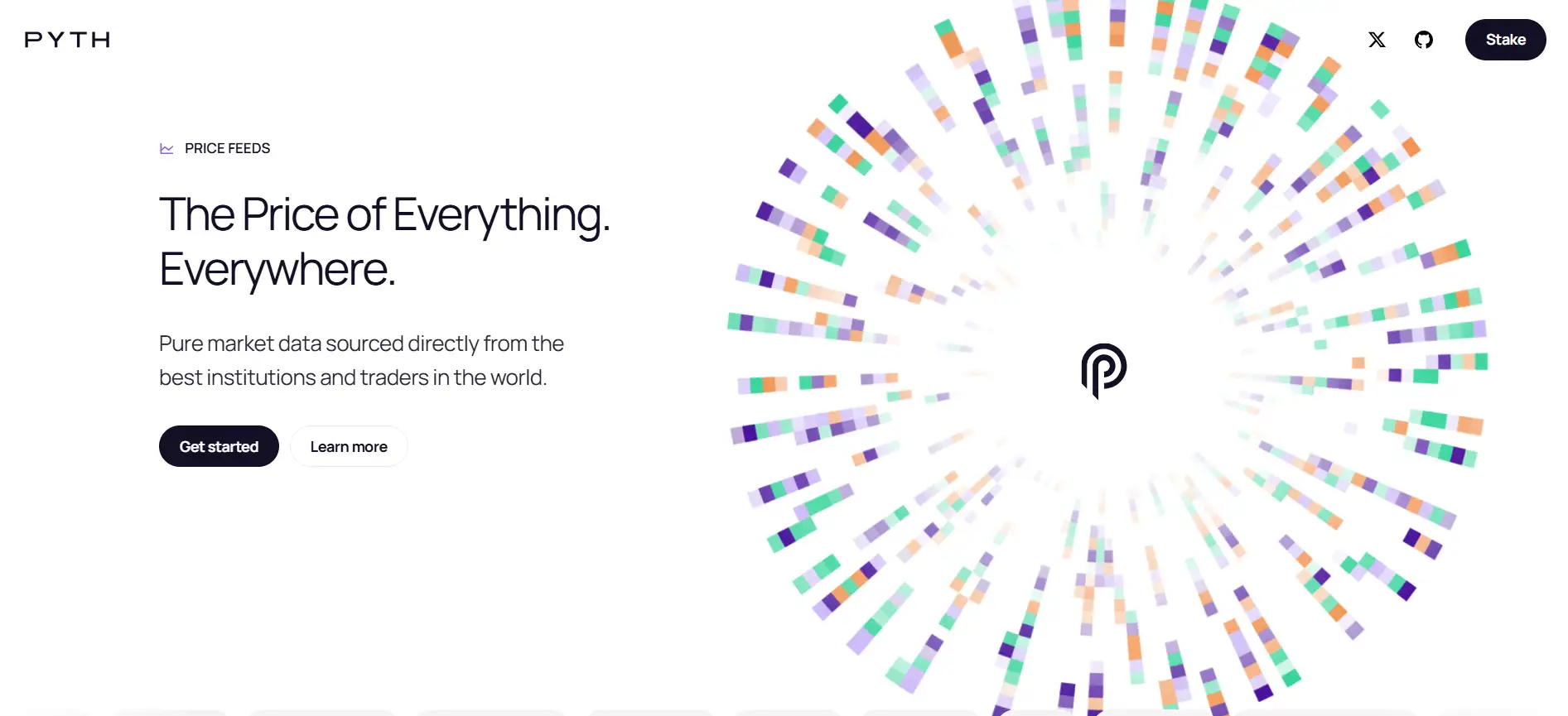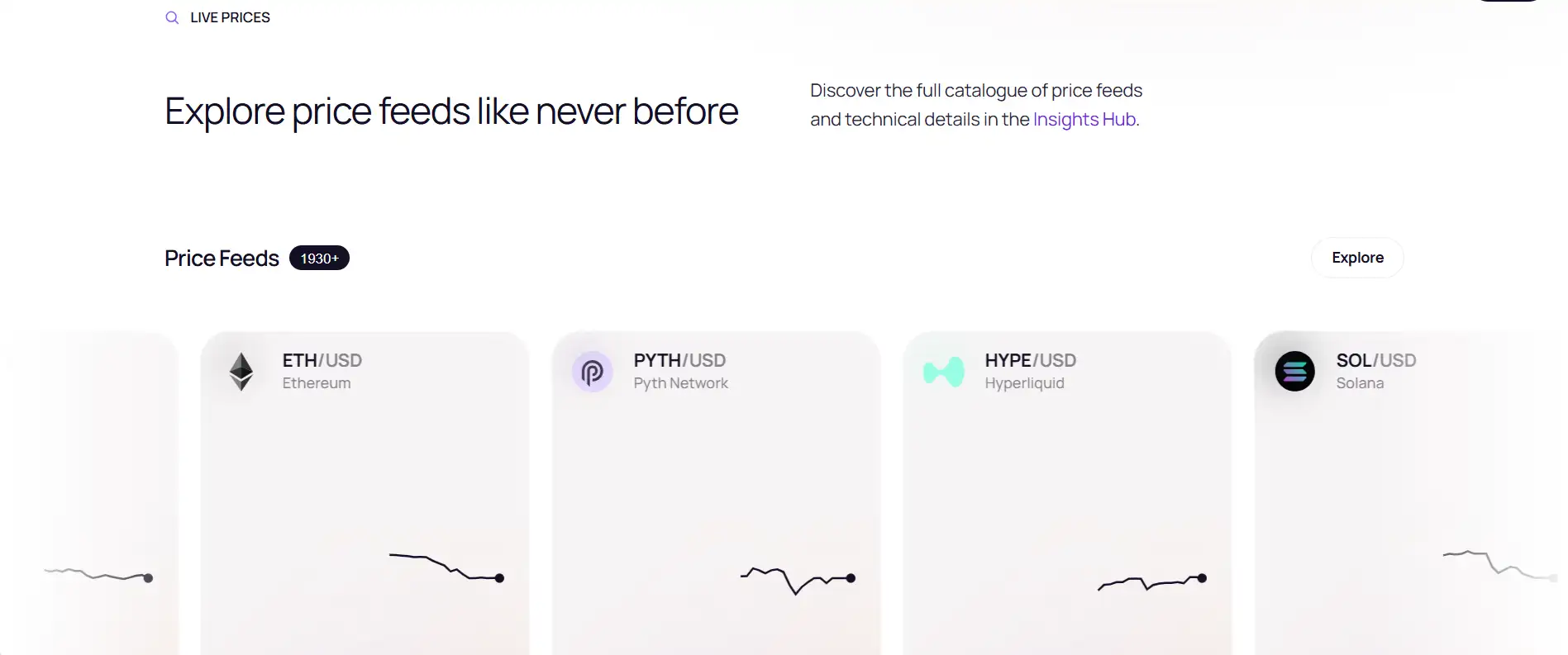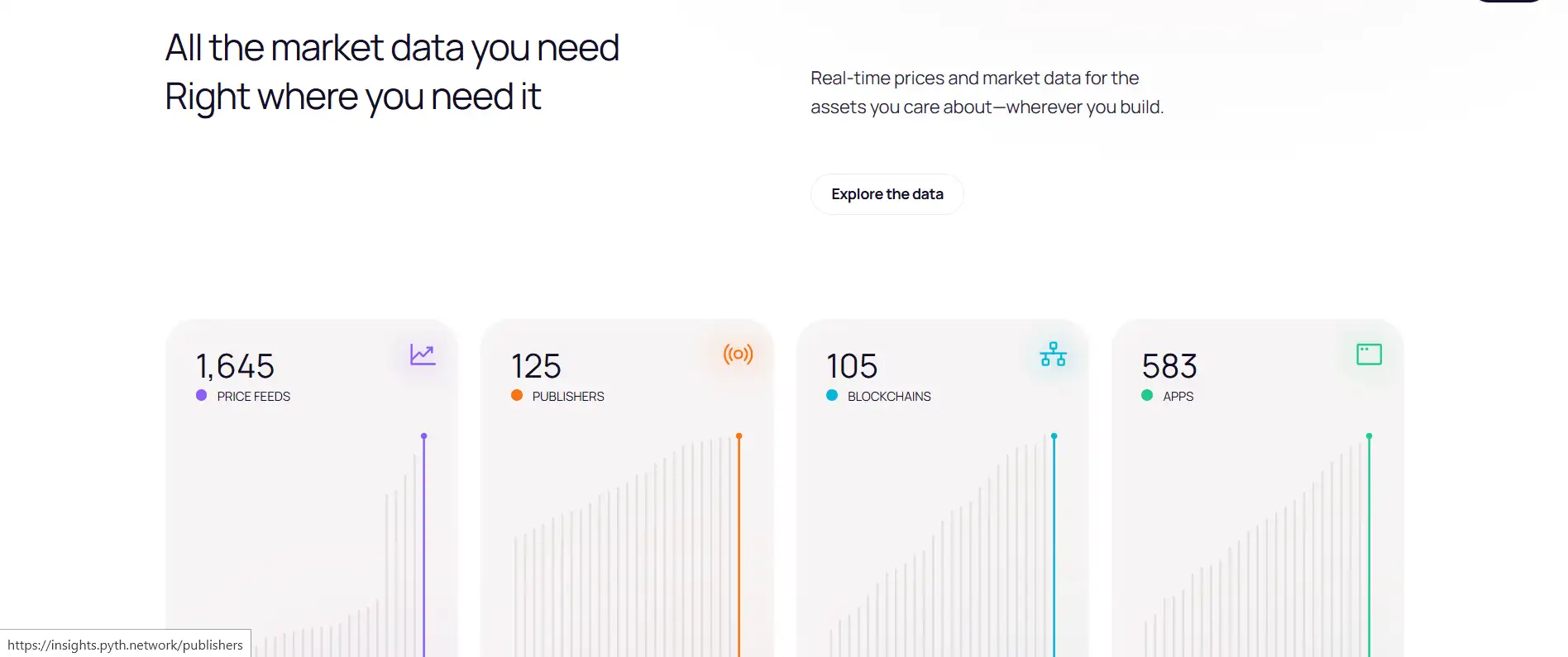About Pyth Network
Pyth Network is a revolutionary oracle protocol delivering high-fidelity financial data directly from the world’s top market participants. Designed to solve the limitations of traditional oracles, it ensures real-time price feeds for a wide range of assets, including crypto, FX, equities, commodities, and more. By aggregating first-party data from over 125 leading exchanges, market makers, and trading firms, Pyth Network removes intermediaries and provides unmatched accuracy and transparency for decentralized applications.
Unlike traditional oracle networks that rely on third-party data, Pyth sources prices directly from those generating them — the institutions themselves. This design unlocks an entirely new standard for DeFi protocols, ensuring latency-sensitive, tamper-proof, and low-cost pricing across more than 1930+ assets. With support across 105+ blockchains and used by over 583+ applications, Pyth Network is rapidly becoming the universal data layer for on-chain finance.
Pyth Network is more than just a decentralized oracle—it is a comprehensive infrastructure layer powering the next generation of on-chain finance. At the heart of the protocol lies a commitment to offering verifiable, low-latency, and permissionless data that is accessible to all. Unlike aggregators that fetch prices from centralized APIs or databases, Pyth operates on a “first-party” model, where price publishers are directly tied to data sources such as centralized exchanges, algorithmic trading firms, and institutional platforms.
This direct data sourcing significantly minimizes slippage, reduces arbitrage windows, and enables high-frequency strategies that are critical for sophisticated DeFi products like perpetuals, lending markets, options protocols, and DEX aggregators. Projects such as Drift Protocol, Morpho, Infinex, and Avantis are already leveraging Pyth for secure and accurate data, reinforcing its role as the backbone of trustless financial infrastructure.
The Pyth Network also includes innovative offerings like Entropy, a randomness oracle delivering verifiable, secure, and on-chain randomness. This is crucial for use cases like gaming, lotteries, and NFT drops. With two distinct tracks—Pyth Core for general coverage and Pyth Lazer for ultra-low latency needs—developers can tailor their integration based on application requirements. These tracks power everything from price updates with millisecond-level latency to traditional DeFi oracles, maintaining the protocol’s status as a best-in-class solution.
As of 2025, Pyth Network supports over 105 blockchains, 1930+ price feeds, and is backed by institutions like Binance, Jane Street, Jump Crypto, Wintermute, and Cboe Global Markets. With its ongoing expansion and open developer ecosystem, Pyth is poised to continue transforming the financial data industry, one block at a time.
Pyth Network offers numerous key benefits that differentiate it from legacy oracle systems:
- First-Party Price Data: Directly sourced from over 125 institutional publishers, offering authentic, real-time financial data with unmatched transparency.
- Cross-Chain Compatibility: Seamless support for over 105 blockchains, enabling builders on any chain to access accurate market prices via Pyth Network.
- Low-Latency Data Feeds: With Pyth Lazer, apps that require ultra-fast responses—like trading bots or perpetuals—can operate efficiently.
- Entropy for On-Chain Randomness: Developers can integrate secure, verifiable randomness for gaming, NFTs, or lotteries—entirely on-chain.
- Permissionless Access: Anyone can access Pyth data without needing a central authority or license, fostering open innovation across DeFi.
Getting started with Pyth Network is simple and developer-friendly:
- Visit the Docs: Head over to the official documentation to understand core concepts, SDKs, and integration flow.
- Select Your Path: Choose between Pyth Core (for general-purpose pricing) or Pyth Lazer (for low-latency data).
- Implement in Minutes: Use sample code provided for Solidity, Rust, or JS-based dApps. With just a few lines of code, fetch data for any asset.
- Explore Entropy: Access the Entropy API for integrating randomness into dApps. Ideal for games and raffles.
- Join the Community: Collaborate with developers on Discord and stay updated with the latest upgrades through the official blog.
Pyth Network FAQ
Pyth Network sources its data directly from over 125 first-party publishers, including global exchanges, trading firms, and market makers. This eliminates intermediaries and reduces the risk of data tampering or latency issues. Unlike typical oracles that rely on aggregated third-party APIs, Pyth Network delivers authentic, real-time pricing from the origin of the market signal.
Pyth Lazer is designed for ultra-low latency use cases where speed is critical—such as high-frequency trading, liquidation engines, or real-time games. It offers 1ms update frequency, custom throttling, and access to granular market data like bid-ask spreads and market depth. In contrast, Pyth Core provides robust, permissionless data for standard DeFi needs. Learn more on the official website.
Yes! Pyth Network provides real-time price feeds for a wide array of asset classes, not just crypto. These include FX rates, equity prices, metals like gold and silver, oil, gas, and synthetic assets. By partnering with traditional finance institutions, Pyth Network bridges TradFi and DeFi with unparalleled data access.
Entropy is Pyth's on-chain randomness engine, built for gaming, lotteries, NFT minting, and unpredictable outcomes. It delivers verifiable, cryptographically secure randomness that’s fully transparent and trustless. Developers can integrate Entropy in under 10 minutes using standard Solidity interfaces. Check out the developer resources on Pyth Network.
By integrating Pyth Network, builders get access to high-speed, institutional-grade price data that is decentralized, transparent, and reliable. This allows DeFi apps to support advanced products like perpetuals, margin trading, stablecoins, and synthetic assets. Plus, with support for 105+ blockchains, developers can reach users on almost any chain. Explore the integration guide on Pyth Network to get started.
You Might Also Like












